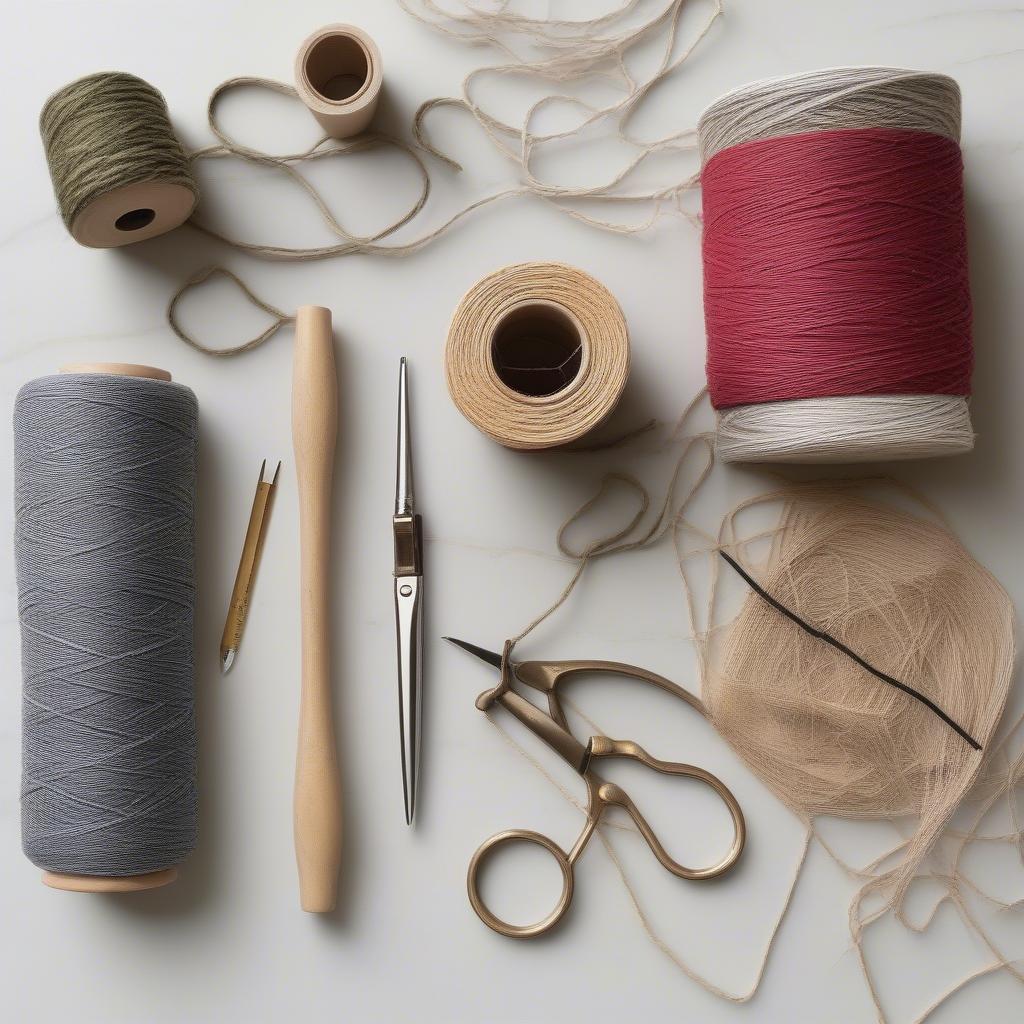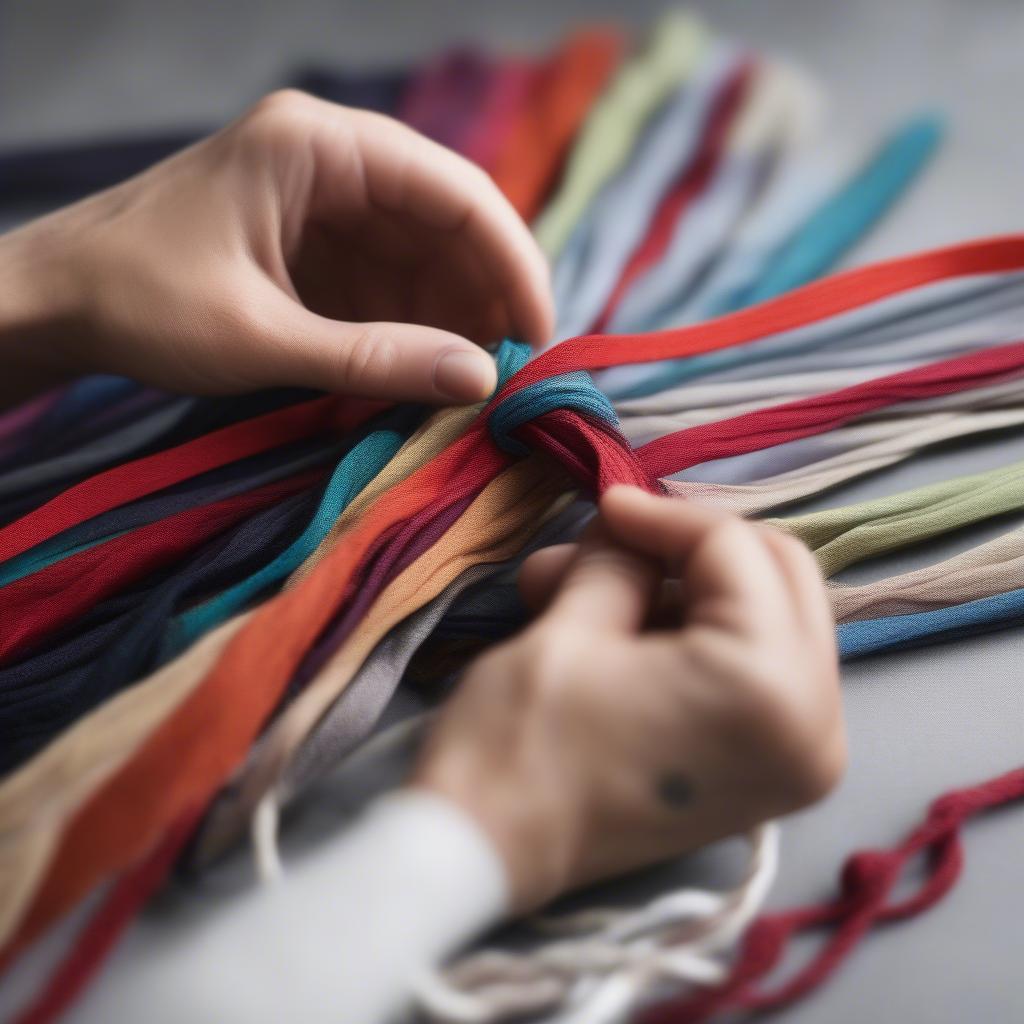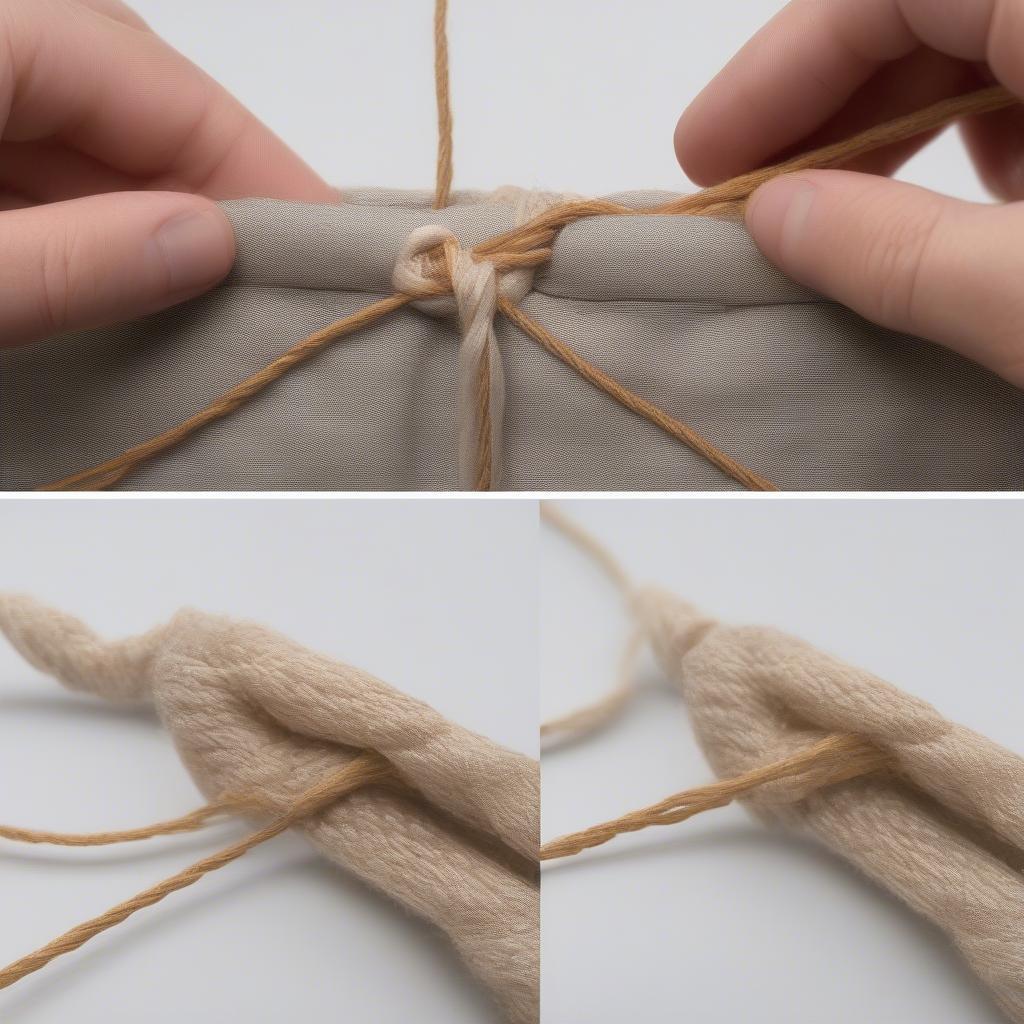Weave Chair
Weave a Chair with Recycled Fabric Twine
Weaving a chair with recycled fabric twine is a rewarding way to create a unique piece of furniture while being environmentally conscious. This guide provides a comprehensive overview of the process, from gathering your materials to the final finishing touches. Transform discarded fabric into a beautiful and functional chair, perfect for adding a touch of handcrafted charm to your home.
Gathering Your Materials for Your Twine Chair
Before you begin to Weave A Chair With Recycled Fabric Twine, you’ll need to gather the necessary materials. This includes the recycled fabric twine itself, a sturdy frame for your chair, and a few tools to help you along the way.
-
Recycled Fabric Twine: Source your twine from old t-shirts, sheets, or any other fabric you have on hand. Cutting the fabric into consistent strips and then tightly twisting them creates a strong and durable twine. The more consistent the width of your twine, the more even your final weave will be.
-
Chair Frame: A strong, stable frame is essential. You can repurpose an old chair frame or build one from scratch using wood or metal. The frame’s design will dictate the final shape and style of your chair. Consider whether you want a chair with arms, a high back, or a simple, minimalist design.
-
Tools: You’ll need scissors, a measuring tape, and potentially a needle and strong thread for securing the twine to the frame. Having a comfortable workspace is also key. A well-lit area with ample space to spread out your materials will make the weaving process much more enjoyable.
 Preparing Materials for Weaving a Chair with Recycled Fabric Twine
Preparing Materials for Weaving a Chair with Recycled Fabric Twine
Preparing the Fabric Twine
Preparing the fabric twine is a crucial step. The quality of your twine directly impacts the final look and durability of your woven chair. Aim for consistent thickness and tightness throughout the twine.
-
Cutting the Fabric: Cut your fabric into long strips, approximately 1-2 inches wide. The width will determine the thickness of your twine. Experiment with different widths to find what you prefer.
-
Creating the Twine: Tightly twist each fabric strip until it forms a strong twine. You can roll the twine between your palms or use a spinning wheel for larger projects. The tighter the twist, the stronger the twine will be.
 Creating Recycled Fabric Twine for Chair Weaving
Creating Recycled Fabric Twine for Chair Weaving
Weaving Techniques for Your Recycled Twine Chair
Several weaving techniques can be employed to weave a chair with recycled fabric twine. Experiment to discover which technique you find most comfortable and aesthetically pleasing.
-
Basic Weaving: This technique involves weaving the twine over and under the frame in a simple, repeating pattern. It’s an excellent starting point for beginners.
-
Basket Weave: This technique creates a tighter, more intricate pattern by weaving two or more strands of twine simultaneously.
-
Figure-Eight Weave: This technique uses a figure-eight motion to create a decorative and durable weave.
-
Macrame: Consider incorporating macrame knots and techniques for a more textured and detailed finish.
“Choosing the right weaving technique is essential for the overall look and feel of your finished chair,” says Amelia Craftwell, renowned fiber artist and author of “The Art of Sustainable Weaving”. “Don’t be afraid to experiment and combine different techniques to create something truly unique.”
Securing the Twine to the Frame
Securing the twine to the frame is crucial for creating a sturdy and long-lasting chair. Ensure the starting and ending points of your twine are firmly attached.
-
Starting: Tie a secure knot around one of the frame’s supporting members. Ensure this knot is hidden within the weave as you progress.
-
Ending: Once you’ve completed the weaving, tuck the end of the twine under existing weaves and secure it with a hidden knot. You can also use a needle and thread to sew the end of the twine securely to the frame.
 Securing Fabric Twine to a Chair Frame
Securing Fabric Twine to a Chair Frame
Finishing Touches
After you weave a chair with recycled fabric twine, adding a few finishing touches can elevate the overall look and feel of your creation. Consider adding decorative elements or applying a sealant for protection.
-
Decorative Elements: Consider adding tassels, beads, or other embellishments to personalize your chair. These additions can further enhance the handcrafted appeal.
-
Sealing: Applying a sealant can protect the twine from wear and tear, especially if the chair will be used outdoors. Choose a sealant appropriate for fabric.
“The beauty of working with recycled materials is that each piece carries its own unique story,” says Elias Reed, a sustainable furniture designer. “Adding personal touches through decorative elements further enhances this individuality.”
Conclusion
Weaving a chair with recycled fabric twine is a fulfilling project that allows you to create a functional piece of art while embracing sustainable practices. From gathering your materials and preparing the twine to mastering various weaving techniques and adding finishing touches, each step contributes to the creation of a truly unique and personalized chair. So gather your materials and start weaving your own masterpiece today!
FAQ
- What type of fabric is best for making twine?
- How do I make the twine consistent in thickness?
- What if my chair frame is uneven?
- Can I use this technique for other furniture projects?
- Where can I find more recycled fabric?
Common Scenarios and Questions:
Scenario: The fabric twine keeps breaking during the weaving process.
Solution: Ensure the fabric strips are cut evenly and twisted tightly to create strong, durable twine.
Question: Can I paint the finished chair?
Answer: Yes, you can paint the chair frame before or after weaving. If painting after weaving, choose a fabric-friendly paint and protect the twine during the painting process.
Further Exploration:
Check out these other articles on our site:
- “A Guide to Sustainable Crafting”
- “Repurposing Old Furniture: Creative Ideas”
Need Help?
Contact our 24/7 customer service team at Hotline: +84 388 951 999, or visit us at Hanoi, Vietnam or Tech Avenue, Suite 12, San Francisco, CA 94105, USA.
